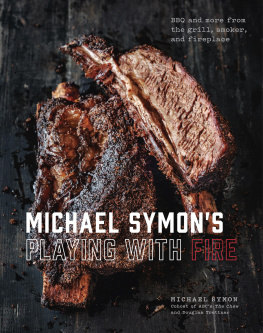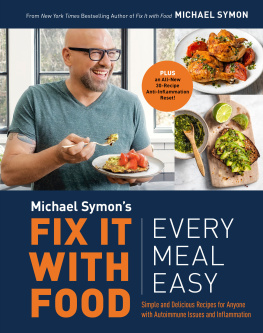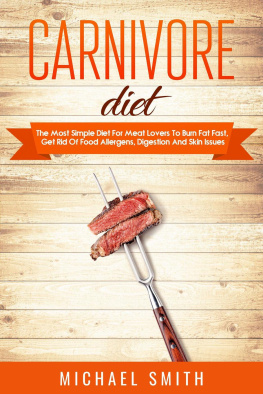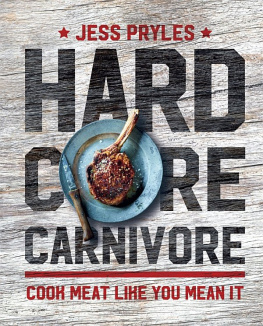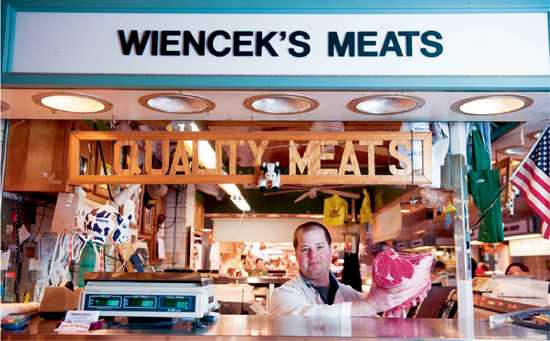
ACKNOWLEDGMENTS
Regardless what you do for a living, you are only as good as the people around you. Fortunately for me, I not only was raised by amazing parents (with great food traditions to boot!), but I also managed to marry way over my head. Im truly blessed that my wife, Liz, and stepson, Kyle, inspire me every day. Since the very beginning, they have given me the freedom and support to chase my wildest dreams.
I am also grateful to my entire restaurant staff, without whom Id never be able to work on projects such as this cookbook. Specifically Id like to thank chefs Derek Clayton, Matt Harlan, James Mowcomber, and Andy Hollyday, who make sure the food in all of our restaurants is excellent while still managing to put up with my quirkiness.
I am grateful beyond words to Doug Petkovic, who in addition to being Lizs and my business partner is also our dearest friend. His continuous hard work and vision is the fuel that runs our company day in and day out. On a more personal level, I couldnt survive without my amazing assistant, Rebecca Yody, who runs my life almost better than me.
Thank you, also, to my manager Scott Feldman and the entire team at Two Twelve Management, Becca Parrish and all the lovelies of BeccaPR, and everybody at ABC and Food Network.
Books, like restaurants, also require a team of people to make them happen. Thank you to Douglas Trattner for turning my thoughts and words into complete sentences with proper punctuation. Thanks to Jennifer May for taking all of these beautiful photographs, many of which were shot during a Cleveland winter while she was six months pregnant. A huge shout-out goes to Katie Pickens, my culinary assistant, who tested every recipe over and over again to make sure theyd work not only in a fully equipped restaurant kitchen but also in your home. Im also grateful to my editor, Rica Allannic, who always managed to keep me on task regardless of how hard I tried to procrastinate.
Thank you all!
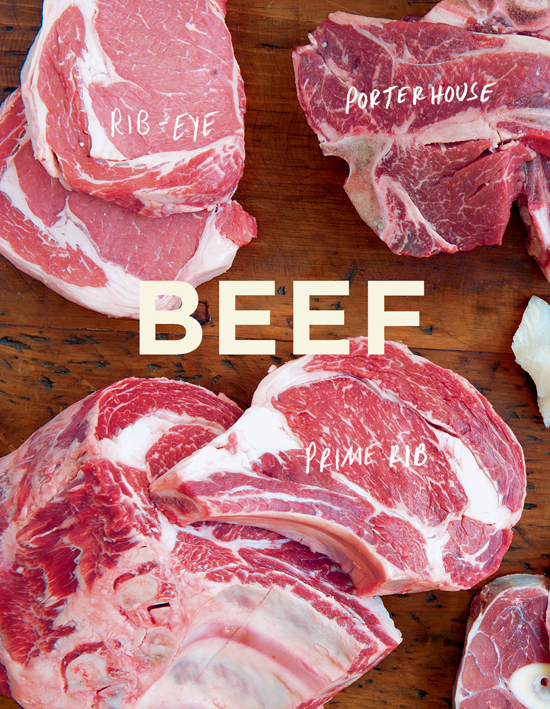
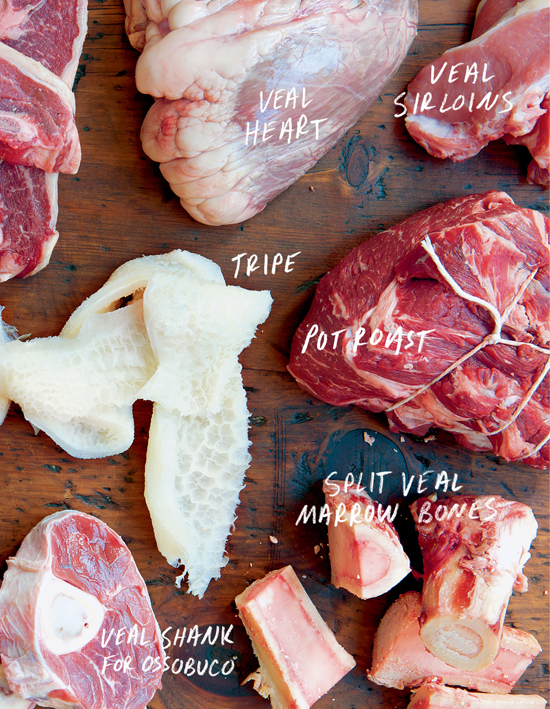
W hile I personally think that pork is the king of all meats, I know that when most people hear the word meat, they tend to think of beef. And why not? Who doesnt love a perfectly grilled T-bone or a fork-tender pot roast? And dont get me started on the unparalleled joy of a great burger.
There are so many buzzwords these days at the market that it can be confusing when it comes to buying beef. Organic. Grain-fed. Grass-fed. Pastured. Conventional. Natural. Then there are the myriad cuts. Flank. Porterhouse. Prime rib. Tenderloin. Sirloin. Brisket. Dont forget about the grading. USDA prime. Choice. Select. And whats this about dry-aging versus wet-aging? Is it any wonder shoppers get shell-shocked when they walk into a store trying to figure out what to cook for dinner that night?
After years of buying, cooking, and eating beef, Ive figured out which types and cuts of beef work best for certain techniques and recipes. So lets take a trip to the meat section and figure this all out together.
HOW TO CHOOSE BEEF
The value of a great butcher cannot be overestimated. Unfortunately, they can be few and far between. If you are lucky enough to have a local butcher who can walk you through the sometimes confusing beef-shopping process, congratulations. At the very least, a good butcher will know what he or she is selling and how best to cook it. Our Main Meat Man (or Woman) should be able to point out which of his products are grass-fed, grain-fed, or perhaps pasture-raised (read on). Perhaps, too, the butcher may be able to pinpoint the precise source of the beef, down to the very farm on which it was raised. Is the beef USDA prime or choice? The grade will determine how much intramuscular fat the meat has. The best beef is well-marbled, streaked with downy white fat lines throughout the muscle. (This is not the same thing as a wide band of fat on the outside of the steak, which does little to improve the beefs flavor and texture.) The more marbling, the higher the grade, and the higher the cost.
In a perfect world, you and your butcher will develop a relationship built upon trust. Ask him or her to allow you to look, touch, and even smell the beef before buying it. Quality beef should be rather dry and only somewhat tacky to the touch; it should not have a very wet exterior. It should still be soft. Examine the color of the beef. It should be deep redalmost bordering on purple. And it should never be suffocated in plastic. Stay away from beef that is bright pink or fire engine red, as it has probably been gassed with carbon monoxide to preserveunnaturallyits color. A properly aged steak will hold its deep red color long after its trimmed.
So, what do you do if you dont have a friendly neighborhood butcher? For starters you can see if any of your local grocery stores has an actual in-house butcher with a handful of common beef sense. Dealing with a real-live person who can answer questions and fill special orders is the next best thing to having a butcher shop. If the only option left is roaming the chilled meat cases stacked with individual plastic-wrapped slabs of beef, there is still hope. Even the largest supermarket chains have begun carrying USDA organic beefand this should be your first choice. This label guarantees that the beef has eaten only organic vegetable matter, has access to pasture, and has not been administered antibiotics or growth hormones. Also good is Certified Humane Raised and Handled, which bars antibiotics and growth hormones. Sadly, labels like all natural and natural dont mean what they sound like as even these animals can be pumped up with nasty stuff.
HOW GRADING WORKS
USDA grading is based on the amount of intramuscular fatoften called marblingthat exists within the beef. Following the mantra that says fat is flavor, beef with more marbling receives a higher grade. Beef with the highest level of intramuscular fat gets labeled Prime, while Choice and Select each contain slightly less respectively. The best beef comes from only steermale cattle. Beef that comes from old dairy cows is of very low quality and is ground up and used primarily in the fast food business. Thats why claims like 100% beef dont mean much and should be taken with a grain of salt.
GRASS-FED VS. GRAIN-FED
The grass-fed versus grain-fed issue can be confusing even for well-informed shoppers. Americans have been eating grain-fed beefsteer that have been raised on at least some grainfor more than a hundred years. Just because the beef is grain-fed doesnt mean it was conventionally raised in a huge commercial feedlot. There are plenty of humanely raised steer that grow up eating both grass and grain.
Steer that are raised exclusively on grass will typically come from smaller farms, be harder to find, and definitely more expensive than grain-fed. It takes a grass-fed steer much longer to reach market size than its grain-fed equivalent, which explains the high prices. Grass-fed beef is leaner, rich in flavor, and has significantly more omega-3 fatty acidsgood fatthan grain-fed beef. Grass-fed beef is also gentler on the environment because all that corn requires large amounts of pesticides and fertilizer to grow.
Next page

